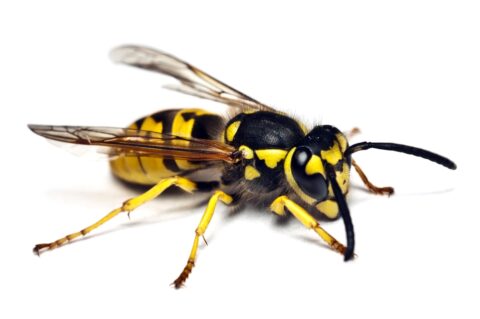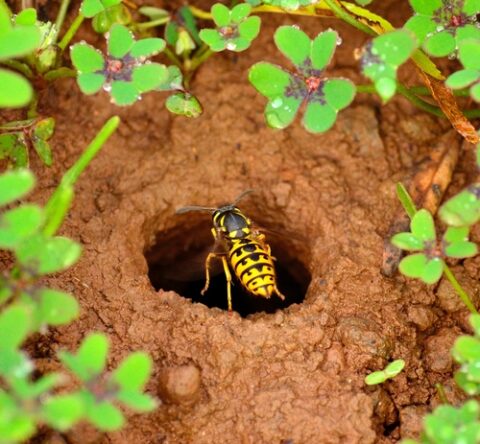Wasp season will soon be upon us! While they are active from spring to mid-autumn, the wasp population becomes most noticeable, buzzing around our picnics and outdoor gatherings in summer. There are yearly variations in wasp populations mainly because of weather changes.
Wasp activity depends entirely on the weather, and our region in the Buffalo, NY area has a good climate for many species of wasps. Ideal moisture conditions for wasp population growth generally involve moderate levels of humidity and rainfall.
Buffalo, New York, has a humid continental climate characterized by four distinct seasons with significant variations in temperature and precipitation throughout the year. The local climate is influenced by its proximity to the Great Lakes, which moderates temperatures to some extent but also contributes to increased snowfall and precipitation. The city experiences many weather conditions, from harsh, snowy winters to warm, humid summers, making it a typical example of a humid continental climate.
Here are some key factors that contribute to favorable moisture conditions for wasps:
- Moderate humidity:
- Wasps thrive in environments with moderate humidity levels, typically between 40% and 60% relative humidity.
- Excessively dry conditions can make it difficult for wasps to construct their nests, as they require moisture to mix with the plant fibers and produce the paper-like material.
- However, overly humid conditions can promote the growth of fungi and mold, which can be detrimental to wasp colonies.
2. Periodic rainfall:
- Wasps benefit from regular, light to moderate rainfall, which helps maintain the necessary moisture levels for nest construction and foraging activities.
- Occasional rainfall helps replenish water sources and increase the availability of prey insects, which can support wasp population growth.
3. Well-drained nesting sites:
- Wasps prefer to build their nests in dry, sheltered locations that offer protection from excessive moisture.
- Areas with good drainage and minimal risk of flooding or waterlogging are ideal, as prolonged exposure to standing water can damage or destroy wasp nests.
It’s important to note that different wasp species may have slightly different moisture requirements, and local climatic conditions can also play a role in determining the ideal moisture levels for a particular region. Additionally, other factors like temperature, availability of food sources, and habitat quality also contribute to the overall success and growth of wasp populations.
Based on the humid continental climate of the Buffalo, New York area, it is a moderately favorable region for wasp populations, with some potential challenges:
Favorable Factors:
- Warm, humid summers: The warm and humid summer months in Buffalo provide suitable conditions for wasp activity, foraging, and nest construction.
- Moderate rainfall: Buffalo receives around 40 inches of precipitation annually, distributed fairly evenly throughout the year. This moderate rainfall can help maintain the moisture levels required for wasp nest building.
- Availability of nesting sites: Urban and suburban areas around Buffalo offer potential sheltered locations for wasps to build their nests, such as under eaves, in trees, or in other protected spots.
Challenges:
- Long, cold winters: Buffalo’s long, cold winters with abundant snowfall can be detrimental to overwintering wasp queens and may limit the growth of some wasp species that are less adapted to harsh winter conditions.
- Excessive snowfall: Buffalo’s heavy lake-effect snowfall can potentially damage or destroy wasp nests, especially if they are exposed to the elements.
- Early spring conditions: Cool, wet springs in Buffalo may delay the emergence and activity of wasps, potentially shortening their active season and affecting population growth.
Overall, while the warm, humid summers and moderate rainfall in Buffalo can be favorable for wasp populations, the long, harsh winters and excessive snowfall may pose challenges for some species. Wasps better adapted to colder climates, such as yellowjackets or certain paper wasps, may fare better in the Buffalo region than species less tolerant of extreme winter conditions.
It is also important to note that different wasp species may have slightly different moisture requirements, and local climatic conditions can also play a role in determining the ideal moisture levels for a particular region. Additionally, other factors like temperature, availability of food sources, and habitat quality also contribute to the overall success and growth of wasp populations.



